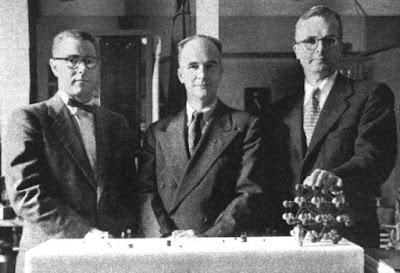Seventy-five years ago this week, Hillsborough Township played host to one of the most significant and nationally publicized events in Somerset County, New Jersey history. The occasion was the homecoming of Raritan's war hero and Congressional Medal of Honor recipient, Gunnery Sergeant John Basilone.
 |
| Collier's Magazine 24 June 1944 |
Sgt. Basilone's story and heroics are well-known to readers, so I will recount them briefly. He was born in 1916, while the long-time Raritan family lived in Buffalo, New York. Within a few years, they were back in the Boro, with John attending St. Bernard's parochial school. He dropped out after 8th grade and enlisted in the army in 1934 at the age of 17. Posted to the Philippines, he picked up his nickname "Manilla John" through his boxing prowess. He returned to the States after three years of service and then joined the Marines in 1940.
 |
| 18 September 1943 Home News |
He was in Guadalcanal in October 1942 when 3,000 Japanese soldiers attacked his position at Henderson field defended by a few dozen men under his command. With a couple of machine guns, his pistol, and a machete, he spent two days holding off the ferocious attack. When the Japanese retreated at the end of the second day, Sgt. Basilone was one of only three men left standing in his unit. He had personally killed 38 Japanese soldiers. He was awarded the Congressional Medal of Honor for his heroism.
 |
| 20 September 1943 Courier News |
Somerset County Judge George W. Allgair spearheaded the drive to honor Sgt. Basilone upon his return to Raritan in September 1943. It was soon announced that John Basilone Day would begin with a parade from Somerville to Raritan, then across the Nevius Street Bridge and conclude with a rally in the meadow at the northern end of the Doris Duke estate.
 |
| 20 September 1943 Courier News |
Sunday, September 19, 1943, began for Sgt. Basilone and his family with High Mass at St. Ann's Church in Raritan, followed by lunch at Raritan Valley Farms Inn. Then it was on to Somerville for the parade.
 |
| 20 September 1943 Home News |
Sgt. Basilone rode in an open car in the parade, which included military, veteran, and fraternal organizations, marching bands, Boy and Girl Scouts, 100 Free French Sailors, military personnel from Hillsborough's South Somerville quartermaster sub-depot, and even a Navy blimp flying overhead. It was estimated that 15,000 people lined the streets of Somerville and Raritan to catch a glimpse of Sgt. Basilone.
 |
| 20 September 1943 Home News |
New York newspaper columnist Harry Hershfeld was master of ceremonies for the rally at Duke's Park, which, in addition to the usual politicians and dignitaries—such as former U.S. Senator and Raritan native Joseph Frelinghuysen and New York Mayor Jimmie Walker—also included nightclub entertainers Danny Thomas, Maurice Rocco, and Robert Maurice and Hollywood starlets Virginia O'Brien and Louise Allbritten.
 |
| 20 September 1943 Home News |
The star power was brought out to sell war bonds - and it was announced from the podium that $1.4 million had been sold in the lead-up to John Basilone Day. Johns-Manville Corporation alone gave $500,000, and the three large Somerset County banks each gave six-figure amounts. The Bridgewater Township Board of Education even chipped in by buying $15,000 worth of bonds.
 |
| 20 September 1943 Home News |
Keeping with the theme, $5,000 in war bonds bought with contributions from the grateful Raritan community was presented as a gift to Sgt. Basilone.
 |
| 20 September 1943 Home News |
The rally at Duke's Park, attended by an estimated crowd of 20,000 - and filmed by the cameras of Fox Movietone News - began and ended with a song from 17-year-old singing sensation and Raritan native Catherine Mastice. She opened with The Star Spangled Banner and closed the rally with God Bless America. In between, she performed a new song, "Manilla John", written especially for John Basilone Day by another Raritan native Joseph Memoli.
 |
17-year-old Raritan songstress Catherine Mastice
photo borrowed from http://www.raritan-online.com/parade-1943.htm
|
Life Magazine's photographer was present to capture the rally's events for a feature that appeared in the October 11, 1943 issue of the popular periodical.
 |
| Images from the 11 October 1943 Life Magazine feature story |
Sgt. Basilone only spoke briefly at the event. He confided later that the day's events were overwhelming and that he regretted not saying more. It's hard to imagine a Marine who held off the enemy for almost three days with no sleep or food being overwhelmed by well-wishers at a day in his honor. Still, on the other hand, so many wanted to get close to him that day, touch him, touch the medal, that security was needed at various points to keep everyone safe.
 |
| 26 September 1943 syndicated comic strip |
Sgt. Basilone's time back in the old neighborhood was brief. On the same day, the syndicated comic strip above appeared in newspapers across the country, the decorated war hero was in Plainfield at another rally selling bonds.
 |
| 27 September 1943 Courier News |
Before too long the military sent him on a national war bond tour with celebrities John Garfield and Virginia Grey. He put in many requests to return to the fighting in the Pacific but was always told that he was too valuable here at home.
 |
| 27 September 1943 Courier News |
At the end of 1943, the military relented, and Sgt. Basilone reported to Camp Pendleton to begin training. He officially reenlisted in the Marine Corps on July 3, 1944, and on July 10, he married Sgt. Lena Mae Riggi, whom he had met while stationed at Camp Pendleton.
Sgt. Basilone was killed on February 19, 1945, during the first day of fighting on Iwo Jima.

















































